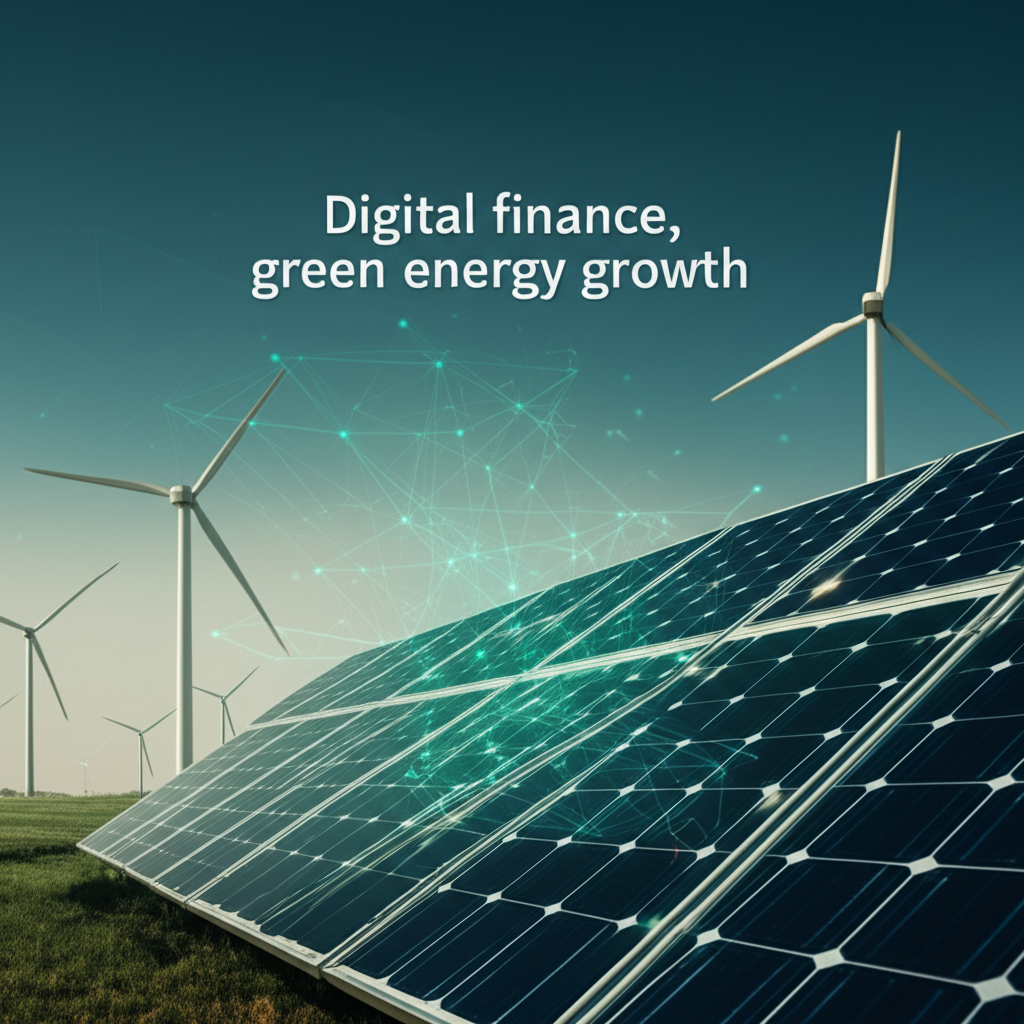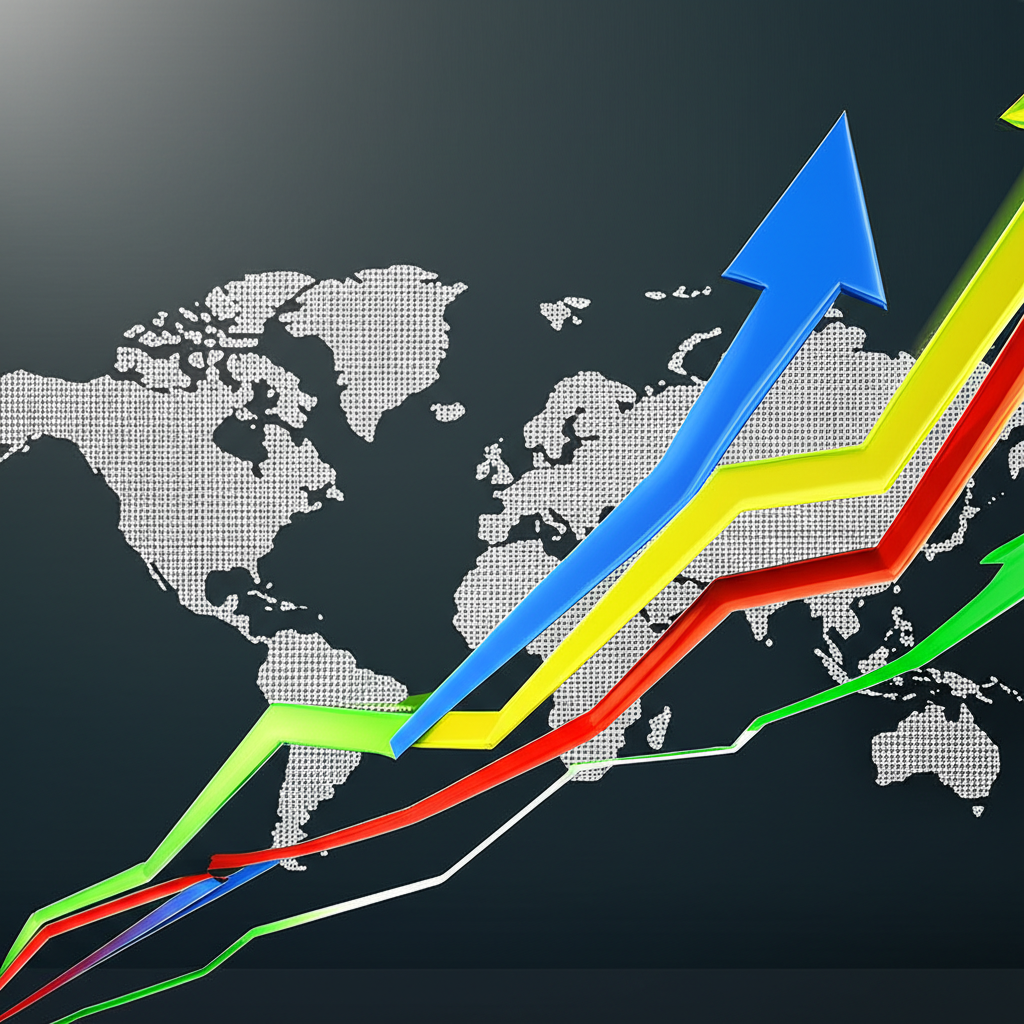Introduction: The Evolving Landscape of Emerging Markets for United States Investors in 2025
As United States investors turn their attention to 2025, emerging markets continue to offer a mix of exciting possibilities and distinct hurdles. Unlike the steadiness found in developed economies, these regions have long delivered stronger growth prospects, making them essential for spreading out investments and building wealth over time. Right now, many investors feel a measured sense of hope, noting how these economies are growing more stable and adaptable. For US investors planning their next moves, grasping the key shifts in these markets will help direct smarter choices and better outcomes in the year ahead.

Key Macroeconomic Trends Shaping Emerging Markets in 2025
The broader economic picture worldwide will heavily influence how emerging markets fare next year. US investors need to keep a close eye on several critical areas that could sway their decisions.

- Global Economic Growth Forecasts: Even as overall worldwide expansion slows a bit, emerging and developing countries should drive much of it. Strong local spending, city expansion, and factory growth will push things forward. The International Monetary Fund (IMF) keeps updating its World Economic Outlook with valuable details on what’s ahead.
- Inflation and Interest Rate Trajectories (US Fed’s Impact): Decisions from the US Federal Reserve still pull a lot of weight around the globe. If US rates stay high, the dollar gets stronger, which raises the price of debt in emerging markets and might pull money out. On the flip side, if the Fed takes a softer approach, it could loosen up conditions and boost assets in these areas. Inflation inside emerging markets, tied to things like raw material costs and local rules, will also shape what their central banks do.
- Commodity Price Outlook: A lot of emerging countries rely on selling raw materials, so their fortunes tie directly to those global prices. Swings in oil, metals for industry, and farm products can shake up trade, money values, and government funds, especially in places like Latin America and sections of Africa.
- Currency Dynamics (USD Strength/Weakness): When the US dollar firms up, it often hurts emerging markets by making dollar-based loans costlier and their goods harder to sell abroad. A softer dollar helps out, easing debt loads and drawing in more foreign money to their investments.
Geopolitical Factors and Their Influence on Emerging Market Resilience
Political and international tensions are playing a bigger role than ever in how investors approach emerging markets. For US investors, balancing these outside risks alongside economic ones is essential.
- Impact of Global Trade Relations: Changes in partnerships and deals can overhaul how goods move and who gets access to big markets. Moves toward protectionism or fresh alliances might boost some emerging economies while holding others back, especially those built on exports.
- Regional Conflicts and Political Stability: Hot spots around the world or shaky politics at home can scare off outside money and spark wild price swings. To pick winners for the long haul, it’s important to look at how well a country runs, its solid institutions, and how united its people are.
- Supply Chain Reconfigurations: With a focus on toughness and variety, companies are rethinking where they make things. Terms like “nearshoring” or “friendshoring” highlight shifts to nearby or friendly spots, opening doors for emerging markets with good locations or low-cost production skills. For instance, countries close to major buyers can grab more factory work quickly.
- US-China Relations and Their Ripple Effects: The ongoing ups and downs between the US and China affect trade, tech, and money flows everywhere. Strains here can disrupt paths for goods, slow down tech transfers, and limit how companies tap into markets linked to these powerhouses.
Top Emerging Markets Investing Trends for United States Investors in 2025
Setting aside the big-picture economics and politics, a few enduring forces are fueling expansion and openings in emerging markets, giving US investors plenty to consider.
The Digital Transformation and Tech Innovation Wave
Countries in emerging markets are jumping straight into modern tech, bypassing older steps to catch up fast.
- E-commerce Growth: With more middle-income families, wider internet access, and people who go mobile first, online shopping is exploding in spots like Asia and Latin America. This shift not only boosts sales but also builds new retail giants.
- Fintech Advancements: Tech in finance is opening doors to banking, loans, and investing for folks who never had them before. Things like phone-based payments, online loans, and digital insurance are taking off at a rapid clip.
- AI Adoption: From streamlining shipping and factories to improving government help and medical care, artificial intelligence is finding uses across industries in these economies, often tailored to local needs.
- Cybersecurity: The more everything goes digital, the bigger the need for strong defenses against threats, sparking chances to invest in homegrown or global security firms.
Green Transition and Sustainable Investing (ESG)
Around the world, the drive toward eco-friendly practices is unlocking fresh paths for money in emerging markets, where needs and policies align well.
- Renewable Energy Infrastructure: Nations are pouring resources into sun, wind, and water power to handle rising energy use and hit environmental goals. This covers big projects for power companies as well as smaller setups for communities.
- Sustainable Agriculture: New ways of farming, like smart tech for crops, better water use, and eco-conscious food growing, are key to securing meals and guarding nature in many of these countries, where land and climate challenges loom large.
- Impact of Climate Policies: Rules from governments to support clean businesses, tax carbon, and enforce green standards are guiding funds toward options that last.
- ESG Integration: Factors covering the environment, society, and company governance matter more to investors everywhere, pushing firms to run cleaner and fairer. This movement is picking up speed, as seen in insights from groups like the Principles for Responsible Investment (PRI).
Demographics and the Rise of the Consumer Class
The people factor forms the backbone of why emerging markets hold such promise for steady growth.
- Urbanization Trends: As folks move from countryside to cities in droves, it ramps up needs for homes, roads, and everyday items in bustling urban centers.
- Growing Middle Class: In places like India, Indonesia, and African hotspots, the middle tier is swelling, leading to more spending on non-essentials and higher-end goods that reflect rising lifestyles.
- Changing Consumption Patterns: Higher earnings mean people buy a wider mix, from travel and learning to fun outings, reshaping local economies.
- Healthcare Demand: In some areas like China, older crowds are straining systems, while elsewhere, better health awareness drives up calls for treatments, drugs, and advanced gear.
Reshaping Global Supply Chains and Regionalization
The effects of the pandemic and world tensions have sped up changes in how goods are produced and moved, favoring select emerging markets.
- Nearshoring/Friendshoring: Businesses are shifting factories nearer to customers or to trusted partners for safety and speed, creating booms in countries such as Mexico, Vietnam, and Eastern European nations with skilled workers.
- Manufacturing Shifts: This means spreading out production based on cheap labor, trade rules, and new tech, often away from single spots to avoid bottlenecks.
- Regional Trade Blocs: Groups like ASEAN and Mercosur are getting stronger, boosting trade within areas and building tougher, linked-up economies that draw steady investment.
Regional Spotlight: Promising Emerging Markets for United States Investors in 2025
To make sharp investment picks, US investors should dig into how different areas are faring on their own terms.
Asia: Continued Dominance with Nuances
Asia keeps leading the charge in emerging growth, though each country charts its own course.
- China’s Economic Rebalancing: China is moving from relying on exports to focusing on spending at home and fresh ideas. Slower but steadier progress opens doors in consumer goods, tech upgrades, and clean power sources.
- India’s Growth Trajectory: With a huge pool of young workers, tech leaps, and policies to grow factories and basics, India looks set for solid gains, potentially outpacing many peers.
- ASEAN Potential: The Southeast Asian group, covering Vietnam, Indonesia, the Philippines, and more, brings young populations, varied businesses, and gains from factories relocating nearby.
Latin America: Resilience and Resource Richness
This region mixes ups and downs but holds clear strengths for those who look closely.
- Brazil’s Agricultural Power: Leading in farm exports, Brazil rides high on global food needs, plus its big home market and chances in renewables add layers of appeal.
- Mexico’s Nearshoring Appeal: Right next door to the US with solid factory setups in cars and gadgets, Mexico is grabbing a big slice of the move to local production.
- Political Stability: Though past turbulence is common, a few nations are steadying up, which helps pull in reliable outside funds over time.
EMEA: Diversification and Strategic Importance
Spanning Europe, the Middle East, and Africa, this broad area gives a range of emerging options with unique edges.
- Middle East Diversification Efforts: Places like Saudi Arabia and the UAE are branching out from oil into tech, visitor draws, and green power to build lasting economies.
- Central & Eastern Europe’s EU Ties: Linked closely to the European Union through trade and funds, these spots provide a more predictable setup for investments.
- African Growth Potential: Despite hurdles, Africa’s youth boom, tech spread, and building projects point to big payoffs down the road, especially in resource and urban plays.
Strategic Approaches for United States Investors in Emerging Markets
Handling the twists of emerging markets calls for clear plans from US investors to make the most of upsides while curbing downs.
Active vs. Passive Investing: What’s Right for 2025?
Whether to go hands-on or set-it-and-forget-it in these markets sparks plenty of discussion among experts.
- Benefits of Active Management in Volatile Markets: Emerging spots often have gaps in info and odd setups, so sharp managers can spot bargains and beat simple trackers. Their know-how in local rules and unique dangers gives a real edge, particularly in choppy times.
- Role of Emerging Markets ETFs: Those wanting wide reach without high fees can turn to Exchange-Traded Funds for emerging markets. These follow big indexes or zero in on areas or nations, offering an easy way to dip in with built-in variety.
Diversification and Risk Management in Emerging Market Portfolios
Keeping risks in check is non-negotiable when building holdings in these unpredictable areas.
- Sectoral Diversification: Mixing bets across fields like tech, everyday goods, and heavy industry cuts down on over-focus and taps into multiple growth paths.
- Geographic Allocation: Don’t put all eggs in one basket-spread across countries and zones to even out bumps from any single economy’s stumbles.
- Currency Hedging Strategies: Local money can swing hard against the dollar, hitting gains. For bigger stakes, tools to lock in exchange rates can shield against those jolts.
Understanding the 7% Rule in Emerging Markets Investing
This idea pops up now and then when talking about what emerging markets might yield over time.
- Explanation of the Rule: It’s not a hard-and-fast law from textbooks, but it nods to how these markets have often returned about 7% more than established ones in the past, thanks to faster expansion and closing gaps.
- Its Relevance to Long-Term EM Returns: US folks with a patient view might use this pattern to argue for adding emerging markets, lifting total gains through their built-in momentum.
- Caveats and Expectations: Remember, history isn’t a promise-swings are big, and results depend on world events, politics, and your picks. Approach with eyes wide open.
Choosing the Right Broker for Emerging Markets Investing in the United States in 2025
Picking the best platform is a make-or-break move for US investors eyeing these markets. Look at rules compliance, range of options, costs, and tools that fit your style.
Top Platforms for US Investors Accessing Emerging Markets
These standout choices give US investors solid ways to tap into emerging market tools, based on what they offer.
- Moneta Markets: US investors after sharp trading setups and top-tier tools will find Moneta Markets a strong pick. Though best known worldwide for forex and CFDs, it lets Americans use its capable system to follow emerging market action via CFDs on key indexes, vital commodities like oil and metals, and many forex pairs with emerging currencies. Moneta Markets explicitly holds an FCA license, ensuring strong oversight, along with competitive pricing, top-notch support, and easy-to-use MT4/MT5 setups. This makes it a dependable option for spreading bets in the areas open to US users.
- OANDA: With solid US creds (registered with CFTC and NFA), OANDA brings reliable forex and CFD access, including ties to emerging currencies and select indexes as rules allow. Its clear costs, smart tools, and deep research make it great for focusing on money and raw materials linked to these economies.
- IG: A big player with deep US roots, IG opens up tons of markets through CFDs and similar (fitting US regs). That covers plenty of emerging stocks, indexes, and commodities indirectly. Praised for learning aids, robust platforms, and wide scope, it’s ideal for US folks wanting broad views on these shifts.
(Note: US regulatory restrictions mean direct stock trading in all emerging market companies may not be available via CFD brokers. Investors should verify specific instrument availability and ensure compliance with US regulations.)
Conclusion: Capitalizing on Emerging Markets Investing Trends in 2025 for United States Portfolios
For US investors stepping into 2025, emerging markets make a strong case worth exploring. Sure, watching economic turns, world politics, and built-in risks takes work, but the deep-rooted boosters-like tech shifts, eco moves, expanding buyers, and supply tweaks-hold real promise. Areas in Asia, Latin America, and EMEA stand ready for big steps forward. US investors can gear up by diversifying wisely, handling risks thoughtfully, and choosing platforms like Moneta Markets for strong access to trade tools. Keeping a long view, paired with sharp insights into details, will help tap the true power of these markets moving forward.
What are the major emerging markets investing trends for United States investors in 2025?
The major trends for US investors in 2025 include the accelerating digital transformation (e-commerce, fintech, AI), the green transition (renewable energy, sustainable investing/ESG), the rise of the consumer class driven by demographics and urbanization, and the reshaping of global supply chains through nearshoring and friendshoring initiatives. These trends present diverse opportunities across various sectors and regions.
Is now a good time for United States investors to consider investing in emerging markets?
While emerging markets carry inherent volatility, 2025 could offer compelling entry points, especially as global interest rate environments stabilize and supply chain reconfigurations mature. The long-term growth prospects, driven by favorable demographics and technological adoption, make a strategic allocation to emerging markets a valuable component for diversification in a US investment portfolio. It’s crucial to conduct thorough research and consider your risk tolerance.
What is the best emerging market to invest in for a United States portfolio in 2025?
There isn’t a single “best” emerging market, as performance varies. However, for 2025, India continues to show strong growth potential driven by its young population and digitalization. Mexico benefits significantly from nearshoring trends, and parts of ASEAN (e.g., Vietnam, Indonesia) offer attractive diversification. Investors should consider a diversified approach across regions and sectors rather than focusing on a single country.
How does an Emerging Markets ETF fit into a United States investment strategy?
An Emerging Markets ETF (Exchange-Traded Fund) is an excellent way for US investors to gain diversified exposure to a broad basket of emerging market companies or regions with a single investment. ETFs offer liquidity, lower costs compared to active funds, and instant diversification, making them a cornerstone for long-term strategic allocation to these markets. Many brokers, including platforms like Moneta Markets (through CFDs on EM indices), provide access to instruments tracking these ETFs.
What does “emerging market trends meaning” imply for US investors?
“Emering market trends meaning” refers to the significant economic, social, and technological shifts occurring in developing economies that create investment opportunities. For US investors, it implies identifying these powerful currents-such as digitalization, green energy, and consumer growth-to make informed decisions that can lead to higher returns and portfolio diversification, albeit with higher associated risks.
How might the stock market forecast for the next 6 months impact emerging markets for United States investors?
The next 6-month stock market forecast, particularly regarding US interest rate policy and global growth, will significantly influence emerging markets. A more optimistic global outlook or dovish shift by the Fed could lead to stronger capital inflows into EM assets. Conversely, increased volatility or tightening financial conditions could act as a headwind. US investors should monitor these short-term forecasts while maintaining a long-term perspective on EM fundamentals.
What is the 7% rule in investing, and how does it apply to emerging markets for US investors?
The “7% rule” in the context of emerging markets often refers to the historical tendency of these markets to deliver approximately 7% higher returns on average than developed markets over the long term. For US investors, it suggests that a strategic, long-term allocation to emerging markets can potentially enhance overall portfolio performance, capitalizing on their higher growth rates and development potential. However, this is a historical observation and not a guarantee, as EM investments come with increased volatility and risk.
Which specific sectors in emerging markets offer the most potential for United States investors in 2025?
For US investors in 2025, several sectors in emerging markets show strong potential. These include technology and digitalization (e-commerce, fintech, AI), renewable energy and green infrastructure, consumer discretionary and staples (driven by the growing middle class), and healthcare. Platforms like Moneta Markets offer various CFD instruments that allow US investors to gain exposure to the performance of these sectors through indices, commodities, and related currency pairs.



No responses yet